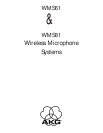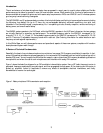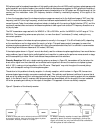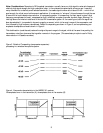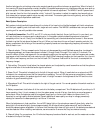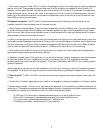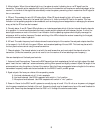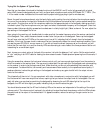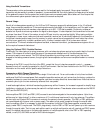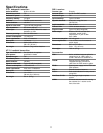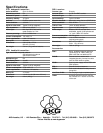
5
Noise Considerations: Monophonic FM broadcast transmission normally has a very high signal-to-noise ratio because of
relatively high signal strength and high modulation index. In the wireless microphone area, where we are “crowding”
many channels into a relatively small radiated bandwidth, the usable signal-to-noise ratio is about 60 dB — which is not
good enough for critical sound reinforcement applications. It is customary to “enhance” this performance through the use
of some kind of code/decode noise reduction, or companding system. In companding, the input signal is given a high
frequency pre-emphases (or boost), compressed so that it effectively occupies a narrower dynamic range, allowing it to
ride high above the inherent noise level of the total FM transmission system. At the receiving end, after the signal has
been demodulated, it is expanded in dynamic range by an amount which is the exact inverse of the compression, and
then followed by high frequency de-emphasis. Details of companding are shown in Figure 3, and complementary pre-
emphasis/de-emphasis curves are shown in Figure 4.
This double action (code/decode) restores the original dynamic range to the signal, while at the same time pushing the
transmission noise floor downward during softer moments in the program. (This same basic principle is used in Dolby
noise reduction in Cassette recorders.)
Figure 3. Details of Companding (compression-expansion)
processing in a wireless microphone system.
Figure 4. Compander characteristics in the WMS61/81 systems.
Pre-emphasis curve in the transmitter (A); de-emphasis curve in the receiver (B).



